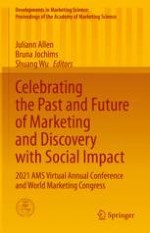2022 | OriginalPaper | Chapter
As if the Product is Already Mine: Testing the Effectiveness of Product Presentation via Augmented Reality versus Website and Real World: An Abstract
Authors : Thomas Alt, Franz-Rudolf Esch, Franziska Krause
Published in: Celebrating the Past and Future of Marketing and Discovery with Social Impact
Publisher: Springer International Publishing
Activate our intelligent search to find suitable subject content or patents.
Select sections of text to find matching patents with Artificial Intelligence. powered by
Select sections of text to find additional relevant content using AI-assisted search. powered by
